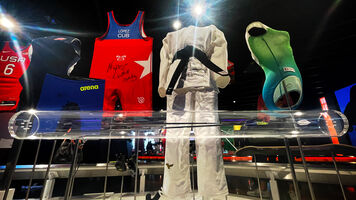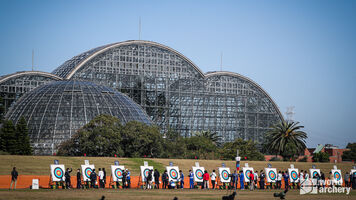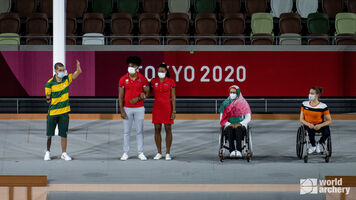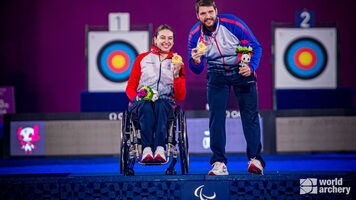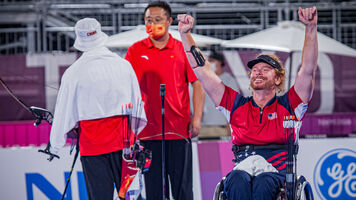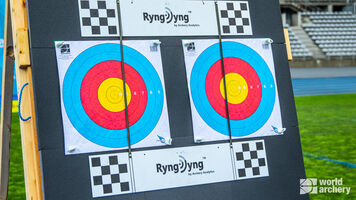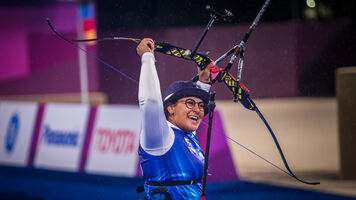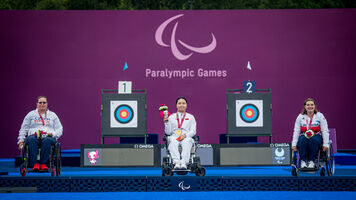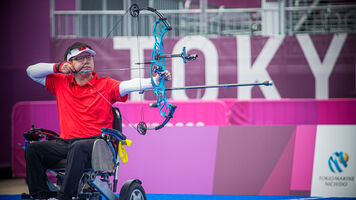Archery meets creativity and invention at the Paralympics
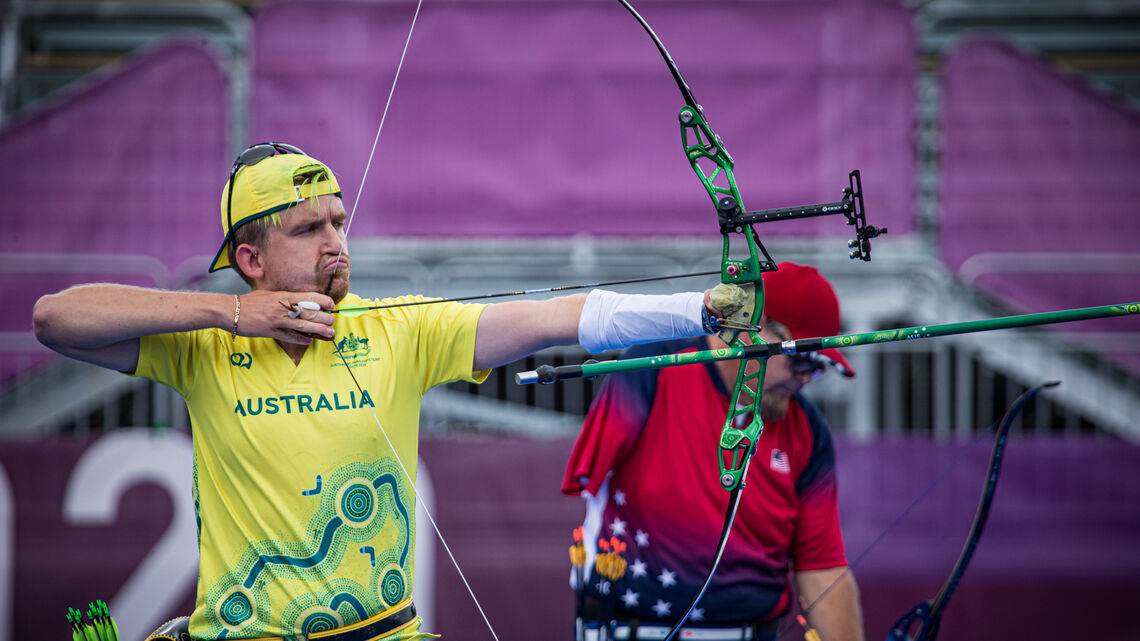
Each of 139 para athletes competing in Tokyo faces challenges that are different to able-bodied athletes. In many cases, impairment demands not just the will to overcome, but a material level of invention to create a custom assistive device allowing them to compete.
For some, even holding a bow requires impressive creativity.
“I worked like 15 years to properly develop it,” said Taymon Kenton-Smith.
“I know how annoying and frustrating it’s when you have the capability of being a high-performance athlete and you’re just limited by the apparatus you don’t know how to create.”
The Australian archer was born with an impaired hand – and he’s unable to grip the handle.
“I’ve tested a lot of many different options,” he explained.
After many years and arrows of attempts, he finally found the appropriate device. It was a long process.
“I started using an aluminium styled device which basically was almost locked to the bar. Then we moved to a leather device that had a single screw of the hook. But the hook started to move so we used two screws. And that really allows me to activate the thumb and the forefinger,” Taymon explained.
Eric Bennett of the USA lost his right arm in a motorcycle accident and he was also forced to find a solution – a device allowing him to draw and release the bow.
“Everything I use, it’s self-made,” he said. “I started nearly 20 years ago using a mouth tab. I make it with a piece of climbing rope and I shot that for many, many years. And then I had a mechanical release which I wore on my shoulder.”
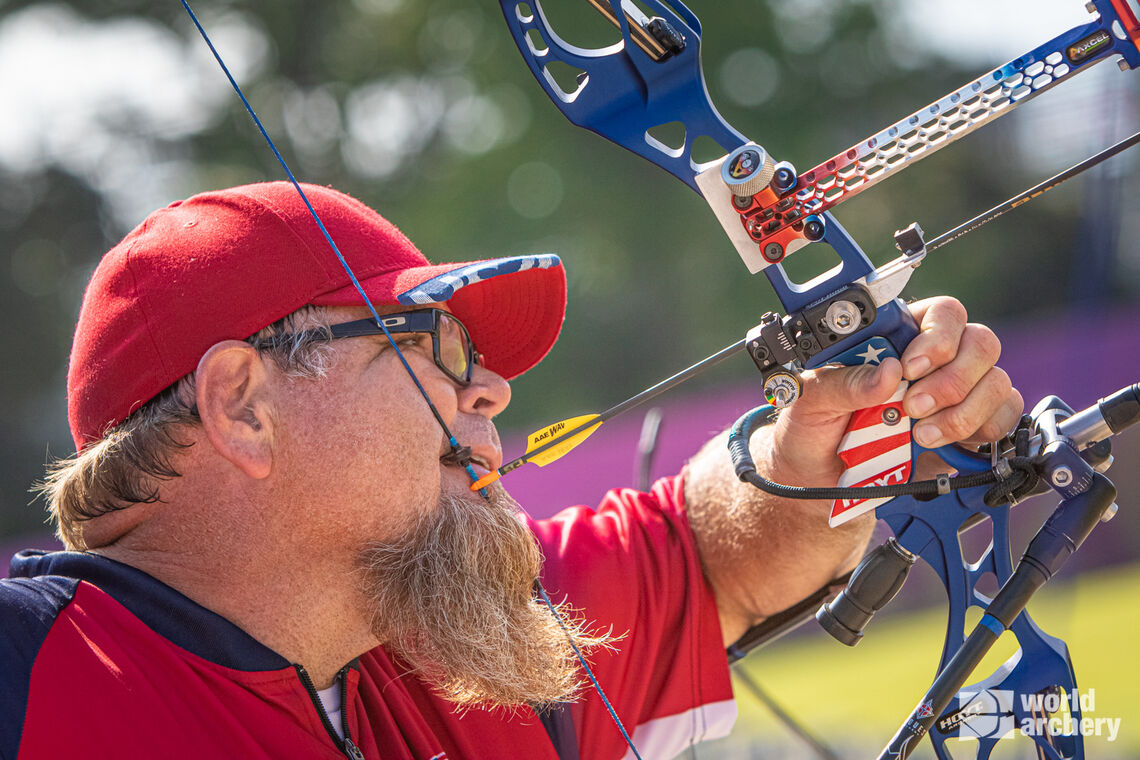
They would both agree that the process of developing the devices made them inventors. But they didn’t make them alone.
“It was made by the Australian Institute of Sport,” said Taymon as he presented an apparatus covering the arm.
“Everyone has his own way of doing it,” Eric confirmed.
There is considerable room for creativity and an inventor’s soul sometimes can be awakened. “My release on the shoulder, I made together with my dad,” added Eric. “We invented how we wanted to make it work and we put a pretty good system.”
As each device is unique, personalised, both Taymon and Eric must pack spares. Something unexpected can always happen.
“I have other devices here with me. And they are all specialised for me but I have some spares. They are handmade. If this breaks, I can quickly run to my backpack and collect another one,” Taymon said.
The slightest problem in archery can have a huge impact on performance. Unlike bows and arrows and every accessory you can buy off the shelf, which all go through countless quality assurance processes, these custom devices, made at home, simply can’t. Maintaining the gear is almost a job in itself.
“It’s very very complex and it took me a lot of arrows to work it out,” said Taymon. “There are days I would shoot 640 [points], and on others, I would go down to 410. Because the apparatus was just wrong.”
These pieces of equipment may not be manufactured and sold but that doesn’t mean that you don’t see similarities on the shooting line. After all, in this community, experiences are shared – and many archers, like Taymon and Eric, pass on their knowledge to other archers facing similar challenges.




